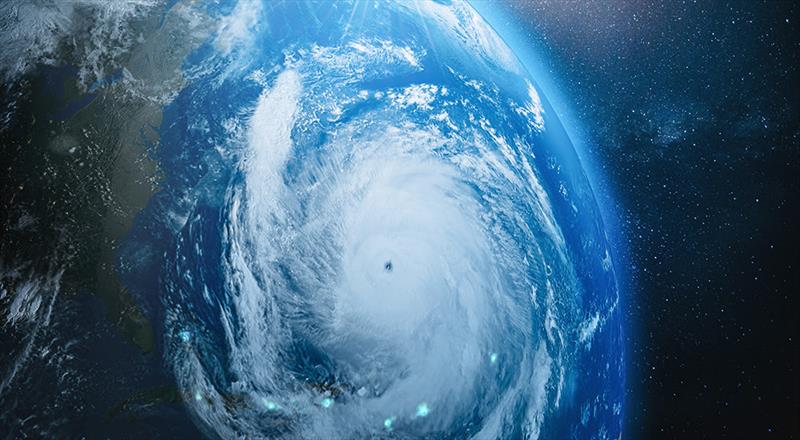
Forecasters increase count for Atlantic hurricane season
by Daria Blackwell / OCC 17 Jul 2023 07:22 PDT

Aerial view from the space of a hurricane approaching the American coast. 3D illustration © Outer Reef Yachts
Colorado State University (CSU) and Tropical Storm Risk (TSR) forecasters have increased their forecasts for the 2023 Atlantic Hurricane season, citing high sea surface temperatures in the Atlantic.
The CSU forecast team gave their latest forecast update, for 18 named tropical storms (17 minus the one pre-season subtropical event), with 9 of them expected to become hurricanes, and now 4 are predicted to become major hurricanes of Category 3 strength or greater.
The Accumulated Cyclone Energy (ACE) forecast had jumped to 125 on June 1st, but this week's update lifted it to 160. This is now a forecast for an above-average Atlantic tropical storm and hurricane season, quite the change over the months since April.
Citing warm sea surface temperatures in the tropical Atlantic that will counteract the increased vertical wind shear and stronger trade winds that occur under El Niño conditions, forecast group Tropical Storm Risk (TSR) has also now raised its forecast for the 2023 Atlantic hurricane season.
The new forecast from TSR calls for the 2023 Atlantic hurricane season to feature 17 named tropical storms, 8 hurricanes, and 3 major hurricanes of Category 3 or more strength, with ACE still forecast at 125, so slightly above normal.
In the past few weeks, climate records have shattered across the earth. July 3-6 were the hottest global average days on record. Average sea surface temperatures (SST) have been the highest ever recorded and Antarctic sea ice extent is the lowest on record. On July 4, the World Meteorological Organization also declared El Niño had begun, "setting the stage for a likely surge in global temperatures and disruptive weather and climate patterns."
Saharan dust levels over the Atlantic Ocean have been unusually low lately and new international regulations of sulphur particles in shipping fuels introduced in 2020 have led to a global reduction in sulphur dioxide emissions (and aerosols) over the ocean. Both of these factors are thought to be contributing to the increase in SST in the Atlantic, and hence an increased risk of tropical storm activity.
This article has been provided by the courtesy of the Ocean Cruising Club.